 Recently I had the opportunity to test something really, really cool. It’s a pair of Motorola Talkabout T800 2-Way Bluetooth Radios, which promise excellent off-the-grid functionality that will keep you and your friends in easy contact when roughing it in the woods (or during a variety of other types of adventures). Join me today as I give the results of my time testing these cool radios to see how well they live up to their claims. Read on for full details!
Recently I had the opportunity to test something really, really cool. It’s a pair of Motorola Talkabout T800 2-Way Bluetooth Radios, which promise excellent off-the-grid functionality that will keep you and your friends in easy contact when roughing it in the woods (or during a variety of other types of adventures). Join me today as I give the results of my time testing these cool radios to see how well they live up to their claims. Read on for full details!
Examining the Video Evidence
I made a brief video overview of the Motorola Talkabout T800 2-Way Bluetooth Radios to give you a closer look at them as well as a better idea of what they do and how well they perform. Check it out:
Motorola Talkabout T800 Description and Features
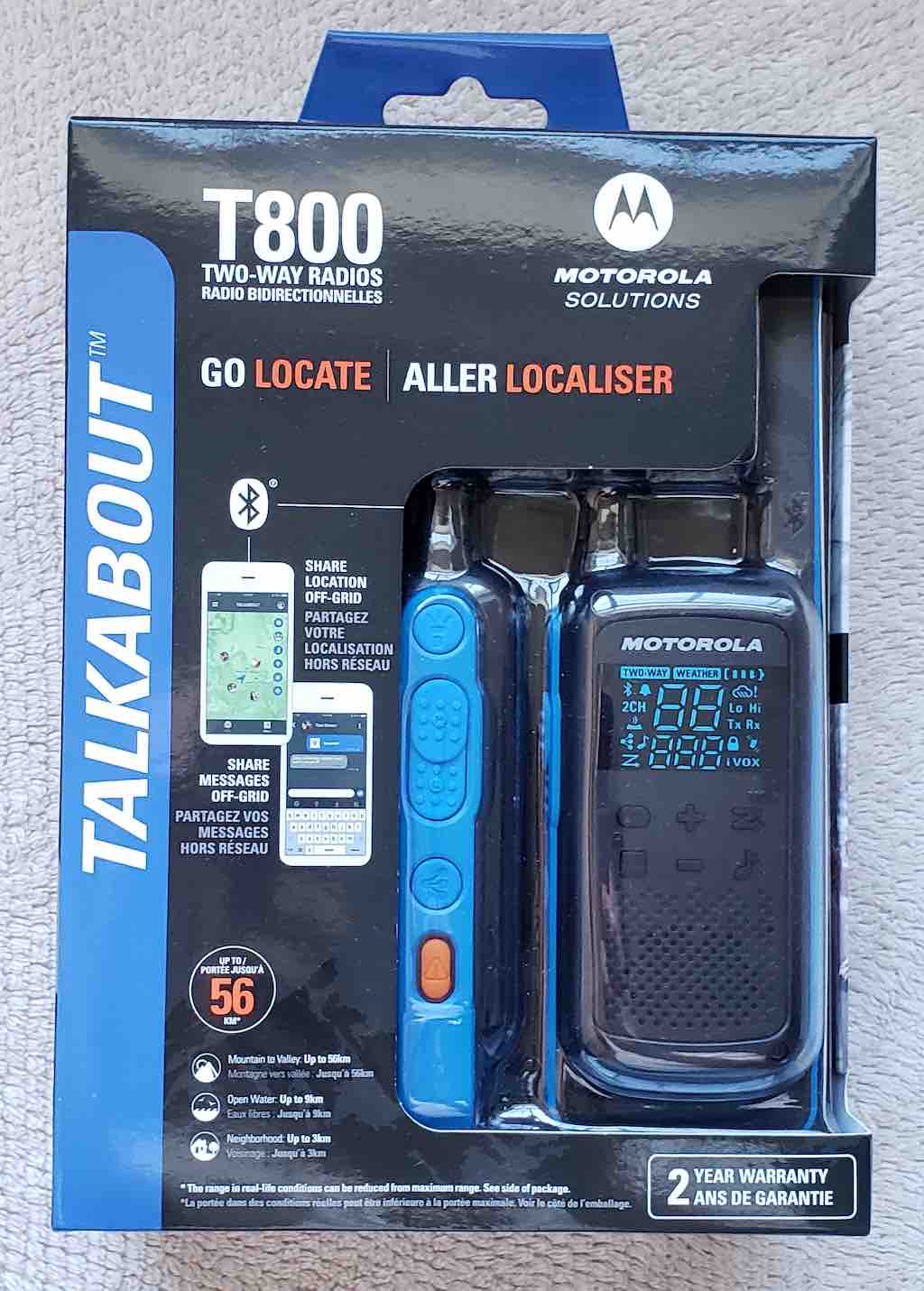 The Motorola Talkabout T800 Two-Way Bluetooth Radios are a pair of walkie-talkies that allow you to communicate with friends and travel companions while off the cellular grid (i.e., while camping, skiing, fishing, etc.). You’ll also be able to share maps, locations, and other messages with them, and, with 22 channels and 121 privacy codes available, it’s always easy to find an open channel to use.
The Motorola Talkabout T800 Two-Way Bluetooth Radios are a pair of walkie-talkies that allow you to communicate with friends and travel companions while off the cellular grid (i.e., while camping, skiing, fishing, etc.). You’ll also be able to share maps, locations, and other messages with them, and, with 22 channels and 121 privacy codes available, it’s always easy to find an open channel to use.
In their basic “push to talk” mode, these radios act like ordinary walkie-talkies, with a range of up to 3 kilometres. This limited range is greatly increased (to a maximum range of 56 kilometres under ideal conditions, which includes open sight lines) when they’re paired via Bluetooth to your Android or iOS-based smartphone and used with the Talkabout App. In such cases, your phone essentially uses the Talkabout radios like modems to send information and messages back and forth, which is a really cool idea.
Other useful features of the Talkabout T800 Radios include LED displays, built-in flashlights, clips to attach them to your belt, and even the ability to tune in to important broadcasts such as weather alerts and updates from 11 different weather channels, including 7 with alerts from NOAA (the National Oceanic and Atmospheric Administration) in the USA. These broadcasts can be heard even here in Canada, which is very handy when you’re spending time with nature.
The Motorola Talkabout T800 Bluetooth Radios also come with (and run on) a pair of 3.6V Nickel-Metal Hydride Batteries (one for each radio, shown below), and they even have an IPX4 weatherproof rating to protect them against rain, humidity, and significant splashes—in case you want to go white water rafting.
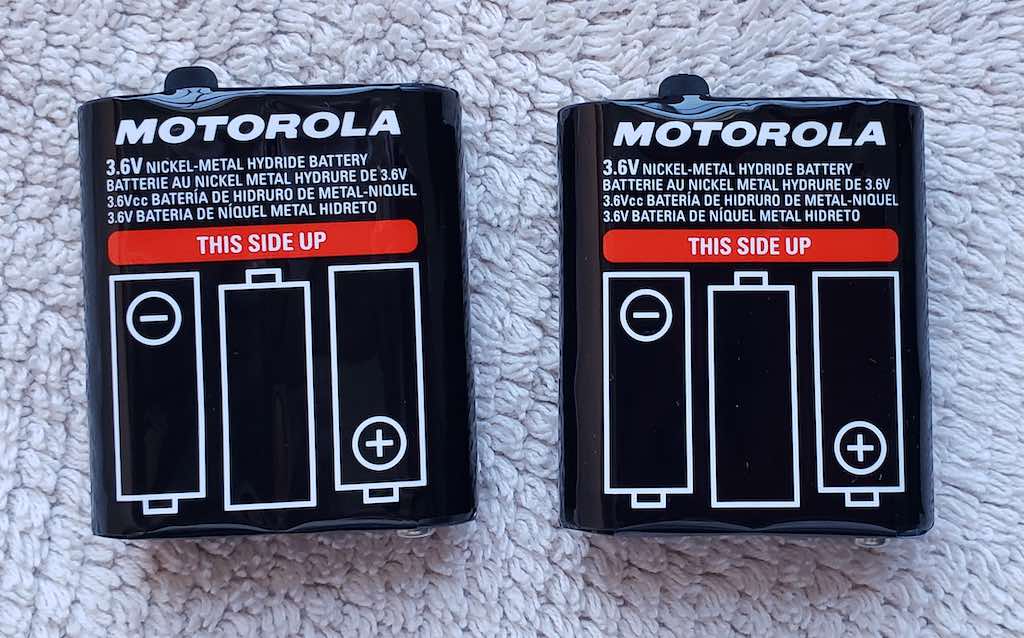
They do require 11 hours of charging time to get them ready for use, but once they’re fully charged, they’re good to go and will last for up to 14 hours of use.
Also of interest with regard to charging these devices is the fact that their unique (split cord) charging adapter is capable of charging both radios at the very same time (see photo below).
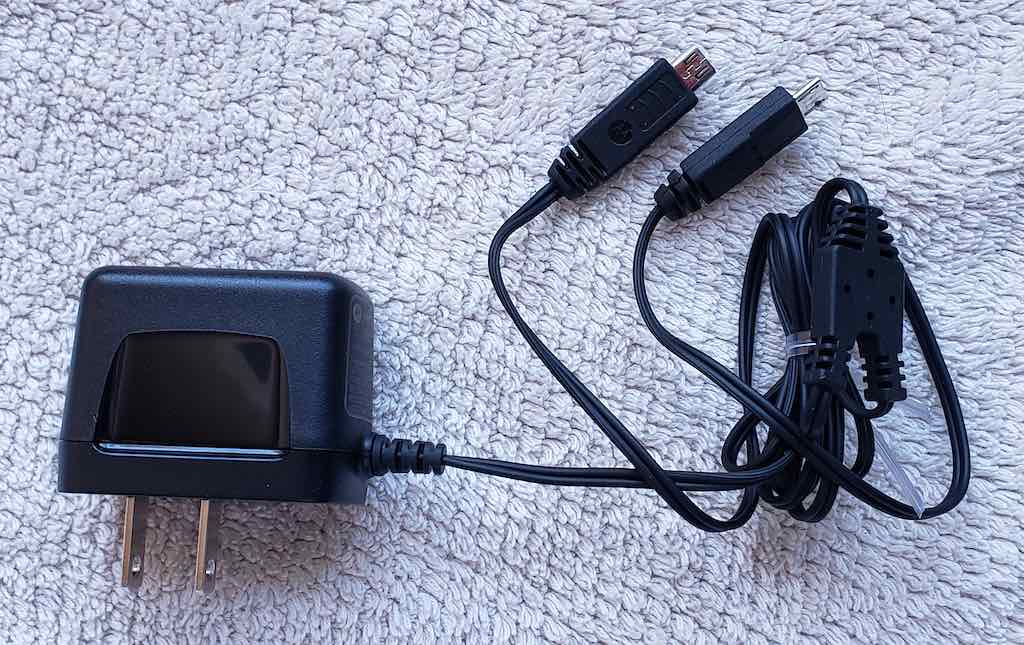
What’s more, if your NiMH batteries eventually die for good, you don’t necessarily need to replace them—these radios can also use 3 x AA batteries if necessary (which have a useful life of up to 25 hours).
Fun with the Motorola Talkabout 2-Way Bluetooth Radios
Using the Motorola Talkabout T800 Radios was really a lot of fun! I tested them under a variety of different conditions and scenarios and found that they most definitely do require open sight lines to be their most effective.
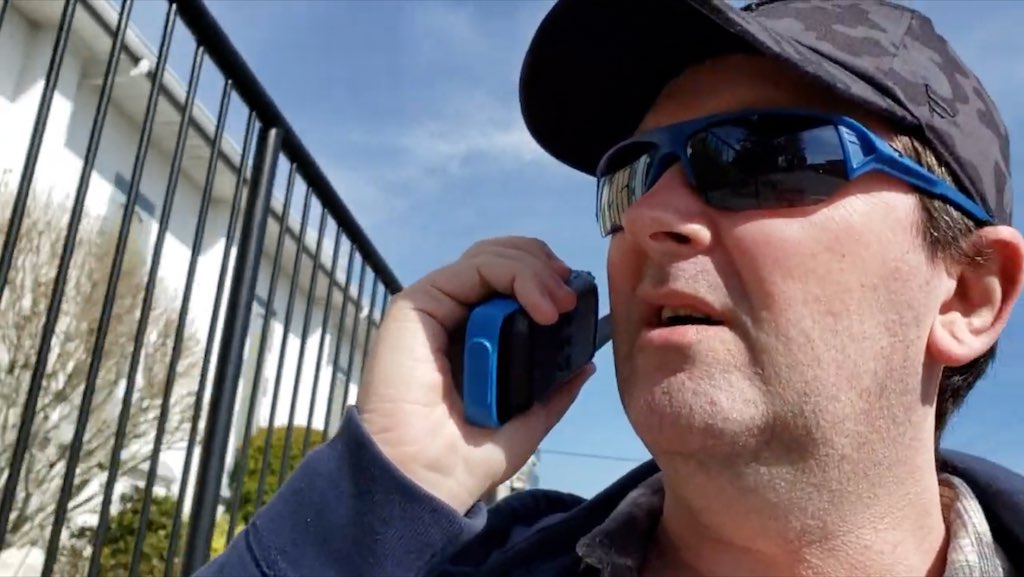
For example, in the first test, I tried using the “push to talk” mode only as I went out on a few errands about town and used the radios to talk to my wife at home. She stayed indoors the entire time, and the interference from being inside a large, mostly concrete building was clearly evident, as the range began to drop off after only about 1 kilometre under those conditions.
Having both parties outside during use creates much more favourable conditions for enjoying an effective range. This seemed to be the case even when open sight lines weren’t always possible.
In fact, with the odd exception, the sound was mostly clear and static free, and both me and my wife understood what the other was saying right up until I wandered out of range, making the push to talk portion of the testing a success.
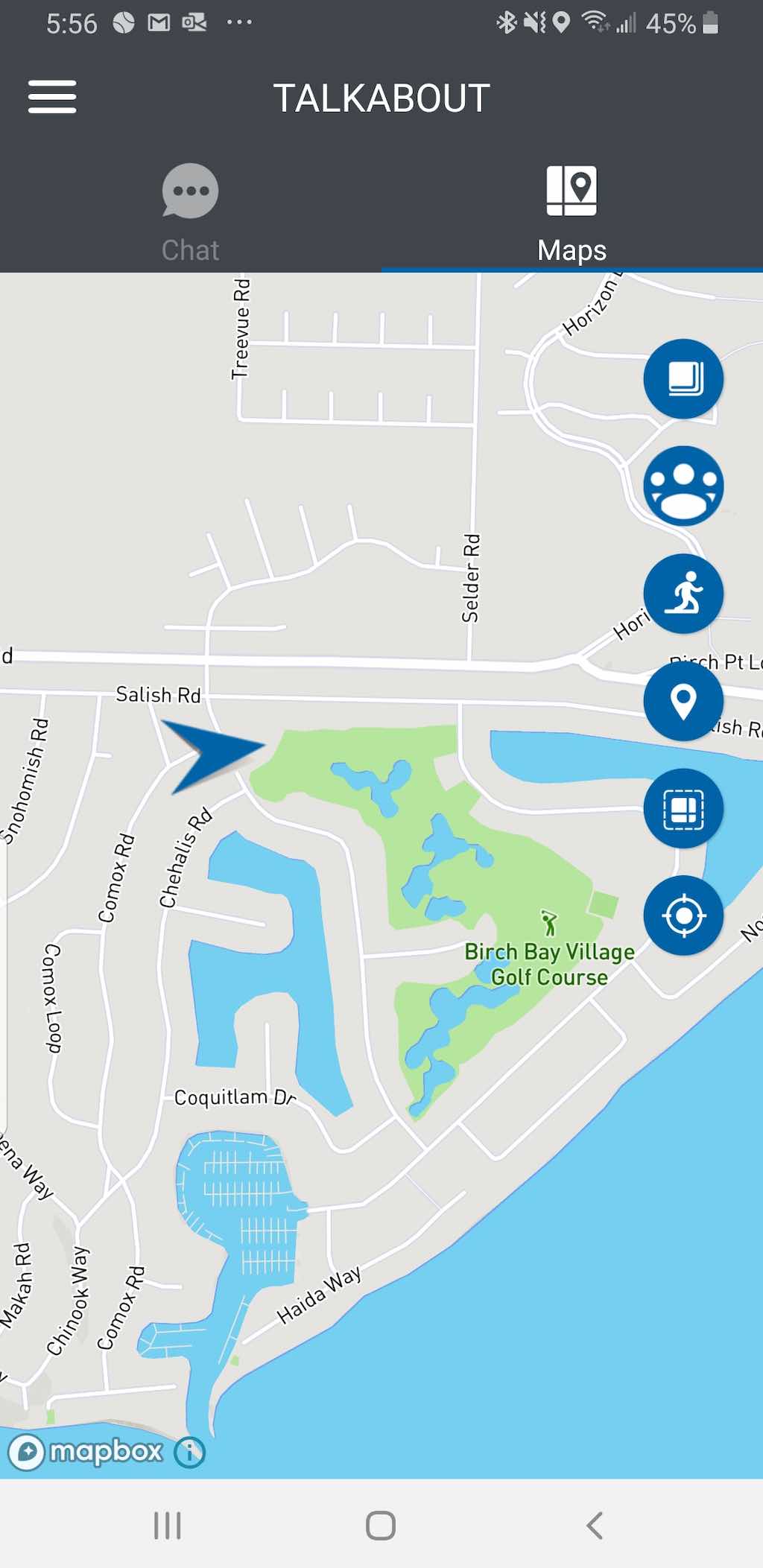 When it came time to pair the radios via Bluetooth to my smartphone and use the Talkabout App, it was very quick and easy to get them initially paired up. The app itself is also intuitive and very easy to use, and the layout is excellent (see photo of its Maps section at right).
When it came time to pair the radios via Bluetooth to my smartphone and use the Talkabout App, it was very quick and easy to get them initially paired up. The app itself is also intuitive and very easy to use, and the layout is excellent (see photo of its Maps section at right).
Where I ran into trouble on this end of the testing was in finding a nice wide-open area to use the radios for properly testing their range. Outside of having access to a boat, it’s difficult to find over 50 kilometres of unobstructed range (incidentally, their range on water is far less than that anyway, coming in at just under 10 kilometres).
In other words, try as we might, this part of the testing was not very successful. Had we had the opportunity to take them skiing or something, I’m sure we could have got much better results, but in our long-range testing via Bluetooth, coverage was spotty at best and non-existent at worst.
The territory we covered, unfortunately, has a lot of very large hills, massive trees, and tall buildings all around, so it’s likely that anyone living in a flatter and more open range would probably have better luck.
Ultimately, you really need to consider where you plan to use these radios if you want to get the most out of them. Anyone using them for peak to peak or peak to valley communications while skiing, for open water communications while fishing or boating (up to their open water range limits), or for relatively close proximity range use in push to talk mode while camping is likely to get the most benefit out of radios such as these.
Final Thoughts
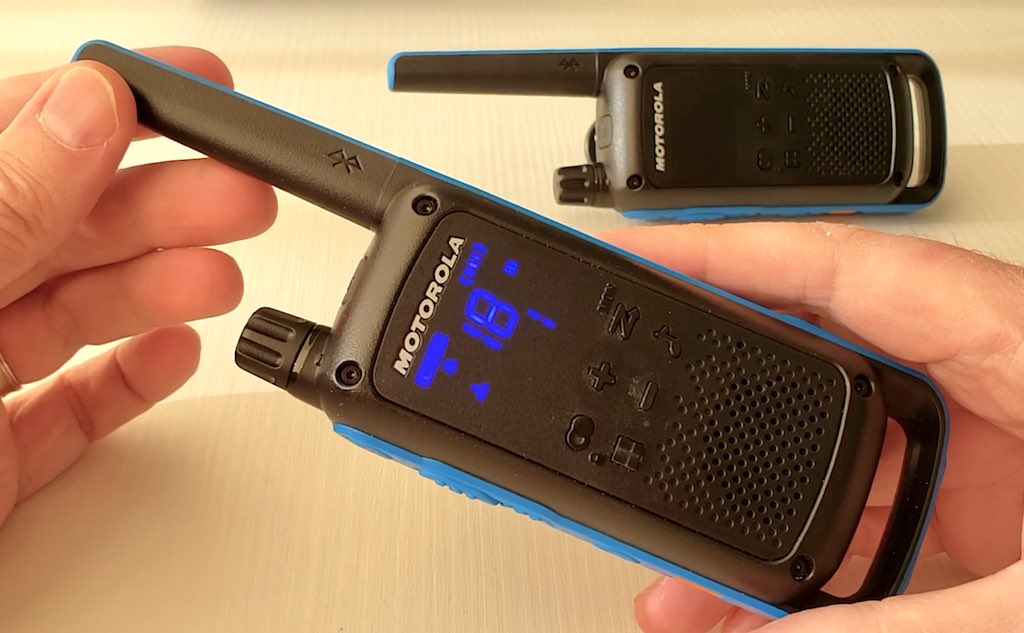 If you want a fun set of walkie talkies with a variety of useful features that will make any camping trip (or similar adventure) more fun, the Motorola Talkabout T800 Two-Way Bluetooth Radios are sure to fit the bill.
If you want a fun set of walkie talkies with a variety of useful features that will make any camping trip (or similar adventure) more fun, the Motorola Talkabout T800 Two-Way Bluetooth Radios are sure to fit the bill.
Still, I wouldn’t exactly count on these things to save my life if things took an ugly turn. Their range under less than ideal conditions certainly doesn’t disqualify them from the possibility of saving one’s life, but it does—in my opinion, disqualify them from being significantly relied upon for such a task.
Even so, as part of a broader range of outdoor adventuring gear, they’ve certainly got their place. And they’re really fun to use too! Recommended for anyone with realistic expectations and a love of the great outdoors.


